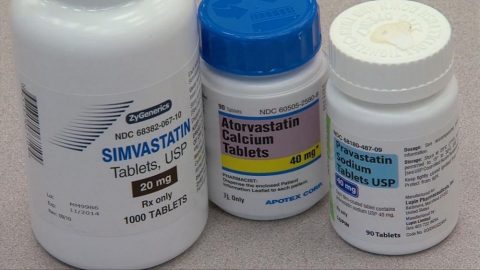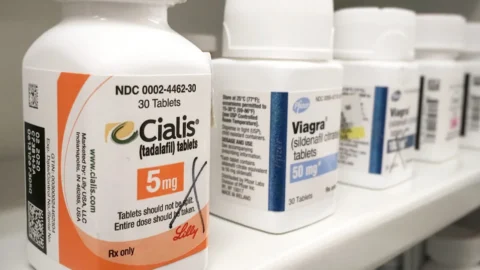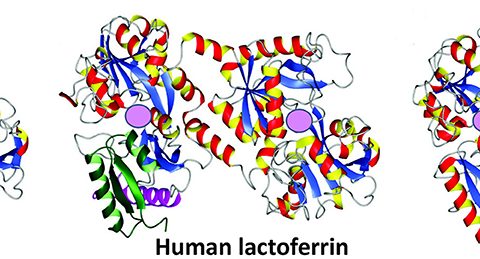Over the past decade, interest in anti-aging treatments and interventions aimed at promoting health, vitality and youthfulness over the life course into old age, has risen exponentially. The popularity and rise of anti-aging interventions has been fueled by the aging baby-boomer generation and the great dissatisfaction surrounding the current medical system in the US and many other Western nations.
Are you frustrated with today’s big-pharma dictated assembly line medicine with doctors who only spend 7 minutes per visit with their patients? Are you against the routine “have a symptom – take a pill” medical system mantra that is so pervasive in modern medicine? Then anti-aging medicine, a medical specialty developed and led by The American Academy of Anti-Aging Medicine (A4M) is for you.
The current medical system – background to the status quo
An editorial from the journal Clinical Interventions In Aging eloquently outlines the emergence of the current medical system status quo 1:
 “Prior to the discovery of penicillin and production of antibiotics, extrinsic disease was the greatest threat to achieving maximum life potential (longevity). That single event increased life-span several decades for the majority of people living in first world nations. However, protection against lethal infection provided by antibiotics exposed older humans to a wide variety of life-threatening diseases resulting from disintegration of internal order during senescence. These intrinsic diseases including diabetes, stroke, heart attack, cancer, and a multitude of others, resulted in creation of medical subspecialties. Although each specialty focused upon different organs and systems, they all administered treatment in response to disease. In other words, the operative model for modern medicine which deals with intrinsic disease is the same as that which was used for extrinsic disease, i.e., a disease occurs and then it is treated.
“Prior to the discovery of penicillin and production of antibiotics, extrinsic disease was the greatest threat to achieving maximum life potential (longevity). That single event increased life-span several decades for the majority of people living in first world nations. However, protection against lethal infection provided by antibiotics exposed older humans to a wide variety of life-threatening diseases resulting from disintegration of internal order during senescence. These intrinsic diseases including diabetes, stroke, heart attack, cancer, and a multitude of others, resulted in creation of medical subspecialties. Although each specialty focused upon different organs and systems, they all administered treatment in response to disease. In other words, the operative model for modern medicine which deals with intrinsic disease is the same as that which was used for extrinsic disease, i.e., a disease occurs and then it is treated.
However, unlike therapy for infection which generally cures disease, treatment of intrinsic diseases only provides symptomatic relief, rarely affecting the underlying causes. Also, because it targets specific symptoms, this approach treats the disease condition as an isolated entity, independent of other bodily functions. Thus, the cardiologist, neurologist, allergist, and dermatologist focus their attentions only upon problems occurring within the system(s) limited by their training. Accordingly, they prescribe drugs that were created to specifically suppress or relieve symptoms directly related to the problem(s).
Despite the fact that this approach rarely provides a cure, it is effective in extending life, if not necessarily its quality, because many of the symptoms of intrinsic disease such as extremely high blood pressure, severe hyperglycemia, or profound breathing difficulties can lead to fatal complications.
 The pharmaceutical industry fits well within the disease model for medical practice. This is because advances in cellular biology and biochemistry allow medicinal chemists to design compounds capable of modulating receptor, enzyme, and other molecular functions that block or attenuate the symptoms of underlying disease. Generally these effects are accompanied by secondary and unintended metabolic consequences. However, if the net result of administering the compound is to relieve primary symptoms then a simple and measurable indicator of efficacy has been achieved and a new drug is born. In other words, the pharmaceutical industry embraces the disease-oriented approach to medical practice because it provides a simple and unambiguous measure of efficacy for their products.
The pharmaceutical industry fits well within the disease model for medical practice. This is because advances in cellular biology and biochemistry allow medicinal chemists to design compounds capable of modulating receptor, enzyme, and other molecular functions that block or attenuate the symptoms of underlying disease. Generally these effects are accompanied by secondary and unintended metabolic consequences. However, if the net result of administering the compound is to relieve primary symptoms then a simple and measurable indicator of efficacy has been achieved and a new drug is born. In other words, the pharmaceutical industry embraces the disease-oriented approach to medical practice because it provides a simple and unambiguous measure of efficacy for their products.
With continuing research into the consequences of aging, it is becoming apparent that medical practice must evolve from this disease-oriented model to one that is health-directed so as to ensure quality of life with longevity. In this alternative approach, patient health and vitality is prolonged and onset of intrinsic disease(s) is delayed or even prevented well into old age.
Although this approach is currently being employed by practitioners around the world, it is widely opposed by many in the traditional medical community and especially by the pharmaceutical industry. One reason for this reluctance is that a health-directed approach to medicine blurs the line between specialties since it requires consideration of the entire body and its interrelated functions, rather than single systems in isolation. This requirement tends to diminish a specialist’s expertise and thus is unacceptable to some. As a result, it is not surprising that medical practitioners who are committed to their individual specialty are not willing to accept change.
Another reason is that effective interventions that delay or prevent consequences of aging are not as easily demonstrated, because rather than simply reducing the intensity of preexisting symptoms (as is required in the disease-oriented treatments), proof for health-oriented interventions requires that efficacy be demonstrated by the absence or delay in onset of symptoms. This type of proof requires advanced and sensitive measurement technologies and need long-term studies.”
Thus, current medicine is effective in preventing death from age-related diseases without curing the diseases or delaying their onset. While preventing deaths, this disease-oriented medical approach increases in the number of people with age-related diseases. In addition, each disease of aging is now treated separately, which is costly and can lead to unintended and unavoidable adverse effects. For example, chemotherapy, used for cancer treatment, has a negative impact on normal tissues and organs. And insulin, which is used for diabetes, has pro-aging effects 2 and may accelerate some pathologies, such as cancer 3, 4.
Proof that the current disease-oriented medical system isn’t working
Recent reports show that the disease oriented traditional medical approach isn’t helping us:

* 7 out of 10 deaths among Americans each year are caused by chronic lifestyle-related diseases 5. By 2020, their contribution is expected to rise to 73% of all deaths globally 5, 6.
* Cardiovascular diseases (CVD) remain the leading cause of morbidity and mortality in modern societies, followed by cancer 7, 8. In 2009, cardiovascular diseases accounted for 32.3% of all deaths, or 1 of every 3 deaths in the United States 8.
* In 2009, 34% of deaths attributable to cardiovascular diseases occurred before the age of 75 years, which is well before the average current life expectancy of 78.5 years 8.
* In 2005, 133 million Americans had at least one chronic illness 9.
* Overweight/Obesity has become a major health concern. Among Americans age 20 and older, 154.7 million are overweight or obese 8. The current US population is 316.7 million 10; thus close to 49%, or almost 1 out of every 2 adults, are overweight or obese.
* In 2010, more than one third of children and adolescents were overweight or obese 11.
* Obesity is associated with 20% higher all-cause mortality in adults 12, and between 1990 and 2010, DALY (disability-adjusted life-years, which is the sum of years of life lost due to premature mortality and years lived with disability) related to elevated BMI, independent of diet composition, increased by 45% 13. If past obesity trends continue unchecked, the negative effects on the health of the U.S. population will increasingly outweigh the positive effects gained from declining smoking rates. Failure to address continued increases in obesity could result in an erosion of the pattern of steady gains in health observed since early in the 20th century 14.
* Obesity in childhood and adolescence often tracks into adulthood, and elevates obesity-induced health risks later in life. For type-2 diabetes, obese adults who were also overweight or obese in childhood and adolescence have 12.6 higher odds, than for those who were obese in adulthood only 15. A similar trend is seen for cardiovascular risk in later life 15, 16.
* 33 % of US adults (78 million) over 20 years of age have high blood pressure 8. Among these, almost 20 % aren’t aware of their condition 8.
* High blood pressure is a major and most common risk factor for developing cardiovascular disease and mortality 17. The mortality risk doubles for every 20-mmHg increase in systolic blood pressure above the threshold of 115mmHg and for every 10-mmHg increase above the diastolic blood pressure threshold of 75mmHg 18.
* In 2010, an estimated 19.7 million Americans had diagnosed diabetes, representing 8.3% of the adult population. An additional 8.2 million had undiagnosed diabetes, and 38.2% had pre-diabetes, with elevated fasting glucose levels 8. The prevalence of diabetes is increasing dramatically, in parallel with the increases in prevalence of overweight and obesity.
 * On the basis of NHANES 2003–2006 data, the age-adjusted prevalence of metabolic syndrome, a cluster of major cardiovascular risk factors related to overweight/obesity and insulin resistance, is approximately 34% (35.1% among men and 32.6% among women) 8.
* On the basis of NHANES 2003–2006 data, the age-adjusted prevalence of metabolic syndrome, a cluster of major cardiovascular risk factors related to overweight/obesity and insulin resistance, is approximately 34% (35.1% among men and 32.6% among women) 8.
* The United States spends significantly more on health care than any other nation. In 2006, our health care expenditure was over $7,000 per person 19, more than twice the average of 29 other developed countries 20. We also have one of the fastest growth rates in health spending, tripling our expenditures since 1990 19. Yet the average life expectancy in the United States is far below many other nations that spend less on health care each year.
* An increasing percentage of health care dollars spent in the U.S. are spent on people with chronic conditions. In 2004, the care given to people with chronic conditions accounted for 85 % of all of health care spending 21.
* In 2000, the annual direct cost of physical inactivity in the USA was estimated as $76.6 billion 22.
* The total number of inpatient cardiovascular operations and procedures increased 28% between 2000 and 2010 8.
* The total direct and indirect cost of CVD and stroke in the United States for 2009 was $312.6 billion. By comparison, in 2008, the estimated cost of all cancer and benign neoplasms was $228 billion. CVD costs more than any other diagnostic group 8.
* In treating patients with chronic conditions, 66% of physicians believe their training did not adequately prepare them to educate patients with chronic conditions, and provide effective nutritional guidance 23.
* The largest number of people with chronic conditions is of working age and is privately insured: 78 million people with chronic conditions have private insurance coverage and their care accounts for about 73 % of private insurance spending. Almost all Medicare dollars and about 80% of Medicaid spending is for people with chronic conditions 21.
What are the causes behind the surge of chronic age-related diseases?
The risk factors for these chronic diseases are mainly caused by unhealthy lifestyles 24. Four modifiable health risk behaviors – lack of physical activity, poor nutrition, tobacco use, and excessive alcohol consumption – are responsible for much of the illness, suffering, and early death related to chronic diseases. Due to the importance of physical inactivity for morbidity and mortality, it has recently been suggested that physical inactivity per se should be regarded as a disease 25.
Stats related to unhealthy lifestyles:
 * People consistently overestimate their own health behavior; almost 90% rate themselves as healthy. The reality is that 9 out of 10 have at least one risk factor for heart disease and stroke 26.
* People consistently overestimate their own health behavior; almost 90% rate themselves as healthy. The reality is that 9 out of 10 have at least one risk factor for heart disease and stroke 26.
* Among young adults aged 18-39 years, only 20% meet low risk criteria, and almost 60% have high levels of at least one risk factor 27. In young adult and middle-aged populations, aged 18 to 59 years, only 5-10% have a low health risk status 28.
* Risk factor measurements in children, obtained at or after 9 years of age, are predictive of sub-clinical atherosclerosis and cardiovascular disease risk in adulthood 29. As children are not screened for health risks to the same extent as adults, this might contribute to an increased disease burden in the coming decades when today’s kids are grownups.
* Today very few Americans are at low risk for heart disease. Approximately 78% of adults aged 20-80 years alive today in the United States are candidates for at least one prevention activity 30. Over 55% of young adults have at least one cardiovascular disease risk factor, and over 37% reported having two or more 31.
* If everyone received the prevention activities for which they are eligible, heart attacks and strokes would be reduced by 63% and 31%, respectively 30. Of the specific prevention activities, the greatest benefits to the US population come from controlling pre-diabetes, weight reduction in obese individuals, lowering blood pressure, and improving blood lipids 30.
* Lack of regular exercise has been estimated to account for 23% of U.S. deaths, with these deaths being attributable to nine chronic diseases 32.
* Poor diet and physical inactivity were the second leading cause of preventable deaths from 1980–2002 33.
* Data very strongly support an inverse association between lifetime physical activity and all-cause mortality, with lifetime inactive individuals having over 30% higher risk of dying compared with lifetime active individuals 34.
* Majority of adults (81.6%) and adolescents (81.8%) do not get the recommended amount of physical activity (150 min/week) 35, and 23% report no leisure-time physical activity at all in the preceding month 36.
*32 percent of U.S. adults engage in no aerobic leisure-time physical activity 8.
* Only 1-3 % of adults attain at least 30 min moderate-to-vigorous physical activity per day from three or more bouts of at least 10 min 37, 38.
* Objective evaluations show that U.S. adults an average only achieve 45 minutes/week (6 min/day) of moderate physical activity and only 18 minutes/week (2.5 min/day) of vigorous physical activity 39.
* With regard to vigorous physical activity, 28% of men and 16% of women achieve 75 min/week and 13% and 7.0% achieve 20 min/day on 3 days/week 40.
*A recent study shows that among people who do meet the physical activity guidelines, only 34.9% of men and 21.6% of women attain an average physical activity level (PAL) of 1.75, the threshold for preventing weight gain 40. To increase overall physical activity levels, a high level of physical activity throughout the day would be required for most people. This explains why individuals who accumulate 30 min/day of moderate-to-vigorous physical activity but are otherwise sedentary during the day, may meet the guidelines for cardiovascular health, without achieving the minimum levels to avoid excessive weight gain 40.
* In 2007, less than 22% of high school students 41 and only 24% of adults 42 reported eating 5 or more servings of fruits and vegetables per day.
* A low intake of fish oil/fatty fish (less than 62 mg/day of EPA and DHA) compared to a higher intake of over 250 62 mg/day of EPA and DHA, more than doubles the risk for heart disease 43.
* Data from the National Health and Nutrition Examination Survey (NHANES) indicate that between 1971 and 2004, average total energy consumption among US adults increased by 22% in women (from 1542 to 1886 kcal/d) and by 10% in men (from 2450 to 2693 kcal/d) 8.
* The increases in calories consumed are attributable primarily to greater carbohydrate intake, in particular, of starches, refined grains, and sugars. Other specific changes related to increased caloric intake in the United States include larger portion sizes, greater food quantity and calories per meal, and increased consumption of sugar-sweetened beverages, snacks, commercially prepared (especially fast food) meals and calorie dense foods 8.
Impact of improved lifestyle habits
The importance of lifestyles for health promotion and anti-aging is underscored by the fact that although genetic factors and age (which are non-modifiable risk factors) are important in determining cardiovascular disease, modifiable risk factors are the major contributors to cardiovascular morbidity and mortality, and account for 90% of all heart attacks 44-47.
Examples of modifiable risk factors that have major consequences for health and determine how gracefully an individual will age, are abdominal obesity, abnormal blood lipoprotein profiles, diabetes, unhealthy food habits, and lack of regular physical activity.
Because a sedentary lifestyle accelerates the aging process 48-52, regular physical activity/exercise is a cornerstone in the anti-aging arsenal:
* 1 vigorous workout per week has been shown to be associated with a 39% reduction in mortality for men and 51% reduction in mortality for women 53.
* Moderate-intensity exercise for 15 min a day can reduce all-cause and all-cancer mortality and extended an individual’s lifespan for an average of 3 years 54. This minimum amount of exercise was found to be applicable to men and women of all ages, even those with cardiovascular diseases or lifestyle risks.
 * For each minute increase in treadmill time on a maximal exercise test made 5 years apart, there was a corresponding 8% decrease in risk of mortality, regardless of baseline health status 55.
* For each minute increase in treadmill time on a maximal exercise test made 5 years apart, there was a corresponding 8% decrease in risk of mortality, regardless of baseline health status 55.
* Regular exercise and physical activity is associated with a reduced risk by as much as 60% of developing many common diseases, such as the metabolic syndrome, diabetes, cardiovascular diseases, breast cancer, colon cancer, prostate cancer, pancreatic cancer, high blood pressure, osteoporosis, Alzheimer’s, asthma and arthritis 56, 57.
* Regular vigorous exercising can postpone disability by 16 years 58.
* It has been estimated that inactive persons would gain up to almost 4 added years from age 50 by becoming active 59, 60.
* Minimal adherence to current physical activity guidelines, which yield an energy expenditure of about 1000 cal per week, is associated with an up to 30% reduction in risk of all-cause mortality 61. Further reductions in risk are observed at higher volumes of physical activity related energy expenditure 61.
* Reducing sitting time to 3 h/day or less is estimated to increase life expectancy in the US population by 2 years 62. Today, people in the US on average spend about 8 hours daily, i.e. half of their waking time, being sedentary 63.
* Among older adults, compared to those who were sedentary for 4 hours/day or more, those who were moderately (2–4 hours/day) and least sedentary (less than 2 hours/day) were 38% and 43% more likely to age successfully, respectively. Among middle-aged adults, those who were least sedentary were also 43% more likely to age successfully 64.
Food habits and nutrition is the other major lifestyle factor that can confer substantial health benefits and help stave off many chronic diseases 65-68:

* A non-calorie restricted Mediterranean diet supplemented with extra-virgin olive oil (33 fl oz per week) or 30 g raw nuts per day (15 g of walnuts, 7.5 g of hazelnuts, and 7.5 g of almonds), consumed for 5 years reduces the incidence of major cardiovascular events by 30% among persons at high cardiovascular risk 69. After 1 year, the same Mediterranean diet supplemented with 30 g raw nuts per day reduces waist circumference by 2 inches (5 cm) 70.
* Compared to consuming less than 1 serving/wk of raw nuts, people consuming 3 servings/wk (about 25 g/day) or more, have a 39% reduced risk for obesity, 26% reduced risk for the metabolic syndrome, and 13% reduced risk for diabetes 71. Higher consumption of raw nuts was also associated with a 32% lower risk of abdominal obesity 71.
* Consumption of raw walnuts, 2 servings (60 g) per week or more, compared with non-consumption or rare consumption, is associated with a 33% lower risk of type 2 diabetes 72.
* People with a high intake of flavonoids (which are health promoting substances found in fruits and vegetables), 360 mg/day, corresponding to 20 serving/week of fruits and 24 servings/wk of vegetables have been found to have a lower risk of fatal cardiovascular disease by 18%, compared to those with a low intake of 120 mg of flavonoids/day 73.
*High blood levels of omega-3 fatty acids (and by implication omega-3 fat intakes) are associated with 27% lower total mortality, especially from cardiovascular deaths 74. This mortality difference corresponds to 2.2 more years of remaining life after age 65 in people with higher versus lower omega-3 levels 74.
* Adhering to a healthy diet, characterized by high intakes of fruit, vegetables, fiber, fish/shellfish, and low intake of sugar, has been associated with a reduced incidence of cardiovascular (CV) events by 32% in and 27% in women 67.
* In a meta-analysis of over 300,000 American, Japanese, and Chinese middle-aged participants, higher dairy consumption (>3 servings/day versus <1 serving/day) was associated with a 15% reduced risk of type 2 diabetes 75. A dose-response analysis showed that the risk of type 2 diabetes could be reduced by 5% for each additional serving of total dairy products and by 10% for each additional serving of low-fat dairy products consumed 75.
* The combination of the main healthy lifestyle factors – maintaining a healthy weight, exercising regularly, eating healthy, and not smoking or abusing alcohol – seem to be associated with as much as an 80% reduction in the risk of developing the most common and deadly chronic diseases 76.
* Among individuals aged 70 to 90 years, adherence to a Mediterranean diet and healthy lifestyle with regular physical activity is associated with a more than 50% lower rate of all-causes and cause-specific mortality 77.
Summary
Anti-aging medicine was developed in response to the flaws of the traditional disease-oriented medical establishment. Supported by the above mentioned statistics and nutrition/exercise interventions, anti-aging medicine builds upon the power of lifestyle to prevent and possibly also treat many common chronic diseases that plague modern societies.
Anti-aging medicine is a new healthcare model that focuses on eliminating the causes behind diseases and preventing their development, rather than just treating symptoms of established diseases.
The key differences between anti-aging medicine and traditional medicine are:
1) Anti-aging medicine uses advanced diagnostic tests to detect precursors for well-established risk factors, and new emerging risk factors. Traditional medicine uses less advanced mainstream diagnostic tests which are not necessarily the most appropriate for the individual patient.
2) By detecting precursors for risk factors (both traditional and well-established), anti-aging medicine doctors can intervene with simple lifestyle interventions to target the causes of diseases. Traditional medicine instead intervenes with symptoms of diseases, which does not eliminate the causes of diseases. This is not effective in a long-term perspective, as medications often confer serious side effects (which often give rise to other complications) and are also expensive.
In part 2 you will learn more about anti-aging medicine as a medical specialty and its mission, and how doctors who practice anti-aging medicine can help you safeguard your health, fitness and longevity.
References:
1. Walker RF. Challenges facing age-management/longevity medicine. Clinical interventions in aging. 2007;2(2):175-177.
2. Bartke A. Insulin and aging. Cell Cycle. 2008;7(21):3338-3343.
3. Bowker SL, Majumdar SR, Veugelers P, et al. Increased cancer-related mortality for patients with type 2 diabetes who use sulfonylureas or insulin. Diabetes care. 2006;29(2):254-258.
4. Hammarsten J, Hogstedt B. Hyperinsulinaemia: a prospective risk factor for lethal clinical prostate cancer. Eur J Cancer. 2005;41(18):2887-2895.
5. Kung HC, Hoyert DL, Xu JQ, et al. Deaths: final data for 2005. National Vital Statistics Reports Available from: http://www.cdc.gov/nchs/data/nvsr/nvsr56/nvsr56_10.pdf 2005.
6. Mathers CD, Loncar D. Projections of global mortality and burden of disease from 2002 to 2030. PLoS medicine. 2006;3(11):e442.
7. Murphy SL, Xu JQ, Kochanek KD. Deaths: final data for 2010. http://www.cdc.gov/mmwr/preview/mmwrhtml/mm6208a8.htm 2010.
8. Go AS, Mozaffarian D, Roger VL, et al. Heart disease and stroke statistics–2013 update: a report from the American Heart Association. Circulation. 2013;127(1):e6-e245.
9. Wu SY, Green A. Projection of chronic illness prevalence and cost inflation. RAND Health; Santa Monica, CA 2000.
10. Bureau USC. U.S. and World Population Clock. http://www.census.gov/popclock/ 2013.
11. Ogden CL, Carroll MD, Kit BK, et al. Prevalence of obesity and trends in body mass index among US children and adolescents, 1999-2010. JAMA : the journal of the American Medical Association. 2012;307(5):483-490.
12. Flegal KM, Kit BK, Orpana H, et al. Association of all-cause mortality with overweight and obesity using standard body mass index categories: a systematic review and meta-analysis. JAMA : the journal of the American Medical Association. 2013;309(1):71-82.
13. Murray CJ, Abraham J, Ali MK, et al. The State of US Health, 1990-2010: Burden of Diseases, Injuries, and Risk Factors. JAMA : the journal of the American Medical Association. 2013.
14. Stewart ST, Cutler DM, Rosen AB. Forecasting the effects of obesity and smoking on U.S. life expectancy. The New England journal of medicine. 2009;361(23):2252-2260.
15. Park MH, Sovio U, Viner RM, et al. Overweight in childhood, adolescence and adulthood and cardiovascular risk in later life: pooled analysis of three british birth cohorts. PloS one. 2013;8(7):e70684.
16. Reilly JJ, Kelly J. Long-term impact of overweight and obesity in childhood and adolescence on morbidity and premature mortality in adulthood: systematic review. Int J Obes (Lond). 2011;35(7):891-898.
17. Chobanian AV, Bakris GL, Black HR, et al. Seventh report of the Joint National Committee on Prevention, Detection, Evaluation, and Treatment of High Blood Pressure. Hypertension. 2003;42(6):1206-1252.
18. Vasan RS, Larson MG, Leip EP, et al. Assessment of frequency of progression to hypertension in non-hypertensive participants in the Framingham Heart Study: a cohort study. Lancet. 2001;358(9294):1682-1686.
19. Services CfMaM. National health expenditures aggregate, per capita amounts, percent distribution, and average annual percent growth, by source of funds: selected calendar years 1960–2007. Available from: http://www.cms.hhs.gov/NationalHealthExpendData/downloads/tables.pdf: Baltimore, MD 2008.
20. (OECD) TOfEC-oaD. Health at a Glance 2011 – OECD indicators. http://www.oecd.org/els/health-systems/49105858.pdf: Organisation for Economic Co-operation and Development, Paris. 2011.
21. Anderson G. Chronic conditions: making the case for ongoing care. . Baltimore, MD: John Hopkins University 2007.
22. Rosamond W, Flegal K, Furie K, et al. Heart disease and stroke statistics–2008 update: a report from the American Heart Association Statistics Committee and Stroke Statistics Subcommittee. Circulation. 2008;117(4):e25-146.
23. Ciemnecki AB, Diaz-Tena N, Fishtein J, et al. National Public Engagement Campaign on Chronic Illness – Physician Survey. Mathematica Policy Research, Inc. 2001.
24. WHO. The world health report 2002 – Reducing Risks, Promoting Healthy Life 2002. http://www.who.int/whr/2002/en/whr02_en.pdf 2002.
25. Weiler R, Stamatakis E. Physical activity in the UK: a unique crossroad? British journal of sports medicine. 2010;44(13):912-914.
26. Heart and Stroke Foundation. Report on Canadians’ Health. Denial is putting Canadians at high risk of cutting their lives short. . 2011.
27. Daviglus ML, Stamler J, Pirzada A, et al. Favorable cardiovascular risk profile in young women and long-term risk of cardiovascular and all-cause mortality. JAMA : the journal of the American Medical Association. 2004;292(13):1588-1592.
28. Stamler J, Stamler R, Neaton JD, et al. Low risk-factor profile and long-term cardiovascular and noncardiovascular mortality and life expectancy: findings for 5 large cohorts of young adult and middle-aged men and women. JAMA : the journal of the American Medical Association. 1999;282(21):2012-2018.
29. Juonala M, Magnussen CG, Venn A, et al. Influence of age on associations between childhood risk factors and carotid intima-media thickness in adulthood: the Cardiovascular Risk in Young Finns Study, the Childhood Determinants of Adult Health Study, the Bogalusa Heart Study, and the Muscatine Study for the International Childhood Cardiovascular Cohort (i3C) Consortium. Circulation. 2010;122(24):2514-2520.
30. Kahn R, Robertson RM, Smith R, et al. The impact of prevention on reducing the burden of cardiovascular disease. Circulation. 2008;118(5):576-585.
31. Services UDoHaH. National Center for Health Statistics. Health, United States, 2010. CDC 2010.
32. Hahn RA, Teutsch SM, Rothenberg RB, et al. Excess deaths from nine chronic diseases in the United States, 1986. JAMA : the journal of the American Medical Association. 1990;264(20):2654-2659.
33. Mokdad AH, Marks JS, Stroup DF, et al. Actual causes of death in the United States, 2000. JAMA : the journal of the American Medical Association. 2004;291(10):1238-1245.
34. Services UDoHaH. Physical Activity Guidelines Advisory Committee Report. http://www.health.gov/paguidelines/Report/pdf/CommitteeReport.pdf 2008.
35. U.S. Department of Health and Human Services USDoA. Physical Activity Guidelines for Americans. Washington, DC: http://www.health.gov/paguidelines/guidelines/default.aspx 2008.
36. Centers for Disease Control and Prevention. Prevalence of self-reported physically active adults—United States, 2007. MMWR 2008;57:1297–1300. 2008.
37. Hagstromer M, Oja P, Sjostrom M. Physical activity and inactivity in an adult population assessed by accelerometry. Medicine and science in sports and exercise. 2007;39(9):1502-1508.
38. Troiano RP, Berrigan D, Dodd KW, et al. Physical activity in the United States measured by accelerometer. Medicine and science in sports and exercise. 2008;40(1):181-188.
39. Tucker JM, Welk GJ, Beyler NK. Physical activity in U.S.: adults compliance with the Physical Activity Guidelines for Americans. American journal of preventive medicine. 2011;40(4):454-461.
40. Scheers T, Philippaerts R, Lefevre J. Compliance with different physical activity recommendations and its association with socio-demographic characteristics using an objective measure. BMC public health. 2013;13:136.
41. Prevention CfDCa. Youth risk behavior surveillance—United States, 2007. MMWR 2008;57(SS-04):1–131: Available from: http://www.cdc.gov/mmwr/preview/mmwrhtml/ss5704a1.htm 2008.
42. Prevention CfDCa. BRFSS prevalence and trends data. Atlanta, GA: Available from: http://apps.nccd.cdc.gov/brfss/page.asp?cat=AC&yr=2007&state=US#AC 2008.
43. Danaei G, Ding EL, Mozaffarian D, et al. The preventable causes of death in the United States: comparative risk assessment of dietary, lifestyle, and metabolic risk factors. PLoS medicine. 2009;6(4):e1000058.
44. Dahlof B. Cardiovascular disease risk factors: epidemiology and risk assessment. The American journal of cardiology. 2010;105(1 Suppl):3A-9A.
45. Ignarro LJ, Balestrieri ML, Napoli C. Nutrition, physical activity, and cardiovascular disease: an update. Cardiovascular research. 2007;73(2):326-340.
46. Napoli C, Stanley WC, Ignarro LJ. Nutrition and cardiovascular disease: putting a pathogenic framework into focus. Cardiovascular research. 2007;73(2):253-256.
47. de Groot LC, Verheijden MW, de Henauw S, et al. Lifestyle, nutritional status, health, and mortality in elderly people across Europe: a review of the longitudinal results of the SENECA study. The journals of gerontology Series A, Biological sciences and medical sciences. 2004;59(12):1277-1284.
48. Booth FW, Hargreaves M. Understanding multi-organ pathology from insufficient exercise. J Appl Physiol. 2011;111(4):1199-1200.
49. Booth FW, Laye MJ, Roberts MD. Lifetime sedentary living accelerates some aspects of secondary aging. J Appl Physiol. 2011;111(5):1497-1504.
50. Charansonney OL. Physical activity and aging: a life-long story. Discovery medicine. 2011;12(64):177-185.
51. Lee IM, Paffenbarger RS, Jr., Hennekens CH. Physical activity, physical fitness and longevity. Aging (Milano). 1997;9(1-2):2-11.
52. Lanza IR, Nair KS. Mitochondrial function as a determinant of life span. Pflugers Archiv : European journal of physiology. 2010;459(2):277-289.
53. Wisloff U, Nilsen TI, Droyvold WB, et al. A single weekly bout of exercise may reduce cardiovascular mortality: how little pain for cardiac gain? ‘The HUNT study, Norway’. European journal of cardiovascular prevention and rehabilitation : official journal of the European Society of Cardiology, Working Groups on Epidemiology & Prevention and Cardiac Rehabilitation and Exercise Physiology. 2006;13(5):798-804.
54. Wen CP, Wai JP, Tsai MK, et al. Minimum amount of physical activity for reduced mortality and extended life expectancy: a prospective cohort study. Lancet. 2011;378(9798):1244-1253.
55. Blair SN, Kohl HW, 3rd, Barlow CE, et al. Changes in physical fitness and all-cause mortality. A prospective study of healthy and unhealthy men. JAMA : the journal of the American Medical Association. 1995;273(14):1093-1098.
56. Booth FW, Chakravarthy MV, Gordon SE, et al. Waging war on physical inactivity: using modern molecular ammunition against an ancient enemy. J Appl Physiol. 2002;93(1):3-30.
57. Rehn TA, Winett RA, Wisloff U, et al. Increasing physical activity of high intensity to reduce the prevalence of chronic diseases and improve public health. The open cardiovascular medicine journal. 2013;7:1-8.
58. Fries JF. The theory and practice of active aging. Current gerontology and geriatrics research. 2012;2012:420637.
59. Franco OH, de Laet C, Peeters A, et al. Effects of physical activity on life expectancy with cardiovascular disease. Archives of internal medicine. 2005;165(20):2355-2360.
60. Paffenbarger RS, Jr., Hyde RT, Wing AL, et al. Physical activity, all-cause mortality, and longevity of college alumni. The New England journal of medicine. 1986;314(10):605-613.
61. Lee IM, Skerrett PJ. Physical activity and all-cause mortality: what is the dose-response relation? Medicine and science in sports and exercise. 2001;33(6 Suppl):S459-471; discussion S493-454.
62. Katzmarzyk PT, Lee IM. Sedentary behaviour and life expectancy in the USA: a cause-deleted life table analysis. BMJ open. 2012;2(4).
63. Matthews CE, Chen KY, Freedson PS, et al. Amount of time spent in sedentary behaviors in the United States, 2003-2004. American journal of epidemiology. 2008;167(7):875-881.
64. Dogra S, Stathokostas L. Sedentary behavior and physical activity are independent predictors of successful aging in middle-aged and older adults. Journal of aging research. 2012;2012:190654.
65. Mozaffarian D, Appel LJ, Van Horn L. Components of a cardioprotective diet: new insights. Circulation. 2011;123(24):2870-2891.
66. Bhupathiraju SN, Tucker KL. Coronary heart disease prevention: nutrients, foods, and dietary patterns. Clinica chimica acta; international journal of clinical chemistry. 2011;412(17-18):1493-1514.
67. Hlebowicz J, Drake I, Gullberg B, et al. A high diet quality is associated with lower incidence of cardiovascular events in the malmo diet and cancer cohort. PloS one. 2013;8(8):e71095.
68. Mente A, de Koning L, Shannon HS, et al. A systematic review of the evidence supporting a causal link between dietary factors and coronary heart disease. Archives of internal medicine. 2009;169(7):659-669.
69. Estruch R, Ros E, Salas-Salvado J, et al. Primary prevention of cardiovascular disease with a Mediterranean diet. The New England journal of medicine. 2013;368(14):1279-1290.
70. Damasceno NR, Sala-Vila A, Cofan M, et al. Mediterranean diet supplemented with nuts reduces waist circumference and shifts lipoprotein subfractions to a less atherogenic pattern in subjects at high cardiovascular risk. Atherosclerosis. 2013;230(2):347-353.
71. Ibarrola-Jurado N, Bullo M, Guasch-Ferre M, et al. Cross-sectional assessment of nut consumption and obesity, metabolic syndrome and other cardiometabolic risk factors: the PREDIMED study. PloS one. 2013;8(2):e57367.
72. Pan A, Sun Q, Manson JE, et al. Walnut consumption is associated with lower risk of type 2 diabetes in women. The Journal of nutrition. 2013;143(4):512-518.
73. McCullough ML, Peterson JJ, Patel R, et al. Flavonoid intake and cardiovascular disease mortality in a prospective cohort of US adults. The American journal of clinical nutrition. 2012;95(2):454-464.
74. Mozaffarian D, Lemaitre RN, King IB, et al. Plasma phospholipid long-chain omega-3 fatty acids and total and cause-specific mortality in older adults: a cohort study. Annals of internal medicine. 2013;158(7):515-525.
75. Tong X, Dong JY, Wu ZW, et al. Dairy consumption and risk of type 2 diabetes mellitus: a meta-analysis of cohort studies. European journal of clinical nutrition. 2011;65(9):1027-1031.
76. Trovato GM. Behavior, nutrition and lifestyle in a comprehensive health and disease paradigm: skills and knowledge for a predictive, preventive and personalized medicine. The EPMA journal. 2012;3(1):8.
77. Knoops KT, de Groot LC, Kromhout D, et al. Mediterranean diet, lifestyle factors, and 10-year mortality in elderly European men and women: the HALE project. JAMA : the journal of the American Medical Association. 2004;292(12):1433-1439.









My only issue with this, is the use of the term “anti-aging”. The idea and proper use of medicine and nutrition to prevent disease, I agree. But “anti-aging” is used improperly, and I believe it is misleading. Anti- by definition means opposed or against. And unless there’s a Noble Prize winner that’s discovered stopping or reversing the aging process, then anti- should not be used.
The term “anti-aging” is the subject of heated debates, yes.
The way it is used by professionals is “anti” meaning being anti the physiological deterioration that occurs as we get chronologically older, not the fact that we are getting or are chronologically older.
I think it is more important to focus on the purpose/mission, than on semantics.
I’m a big fan of Monica’s work, and look forward to her articles here on BrinkZone. And while I agree with her reply, (no need to get into a debate over semantics) I kinda agree with Matt as well, at least in so far as the way the term is being targeted to consumers. “Anti-aging” is most cases is somewhat of a misnomer. The term is constantly being exploited/ misused in pushy marketing of health products from everything from food, to supplements, to creams, herbs, drinks, etc. “Anti-aging face cream”, “anti-aging supplement”, “ant-aging super food”, “anti-aging workouts”, and so on. A better term would be “anti-premature aging”. I’m not aware that cellular degradation, regardless of which cells (in most cases), can be arrested, as its the normal course of nature, whether in humans, or most other forms of life.
BTW, I love the footnotes/ references; guess I’m weird that way.
Thanks for another great article Monica!
To make progress in the field of preventing age-related biological degradation, we need to focus in the issue at hand. Just because something is inappropriately named or misused in media, doesn’t mean that it per see is inappropriate. A parallel can be drawn with finance. There are many clumsy terms in the English language. Again, let’s leave the semantics aside and focus here on the biology.
A lot of scientific debate centers on primary aging (caused by intrinsic bodily processes) vs secondary aging (caused by an interaction of external and intrinsic bodily processes). It is well documented that lifestyle choices can significantly impact secondary aging: for ex obesity, sedentariness, cardiovascular disease and diabetes can cause vascular damage in 30-40 years old people that is manifested in other people not until the 80-90s. Thus, even though a process is deemed to be part of the “normal course of nature” it can be retarded and reduced in severity by interfering.
I’m glad you like the references, so do I 😉
Part 2, with more references, is coming soon…until then, take a look at http://www.AntiAgingAge.com
Nice article, lots of facts. One of the bullet points mentions raw nuts, others just nuts. I’m wondering if lightly roasted nuts and seeds fall under the same category of health benefits. I’ve read some unsubstantiated claims about roasting creating all kinds of poisons, but I’ve never seen anyone back those claims up with research. Also, the meta-analysis about dairy consumption, I wonder if that is related to the high fat content in many dairy products? I love lowfat greek yogurt and I’ve never seen any mention of negative effects of lowfat dairy, unless someone has a lactose problem.
Hey Jeff, quick note on nuts: Many nuts, e.g. almonds, walnuts, which have healthy MUFA “may be a little healthier” raw. I read (don’t have a reference, but you can look it up) that roasting/heating destroys many of the natural digestive enzymes. Also, you can no longer buy raw almonds in the US. Even though they’re sold as “raw”, by FDA law they must pasteurized, flash heated, to destroy possible salmonella contamination.
I don’t think roasted nuts are dangerous, but I choose to eat raw walnuts myself. I buy them from a place that moves a lot of them fresh (nuts.com for one), not the supermarket where they’re left sitting for months. I always refrigerate fresh nuts.
All these studies refer to raw nuts, I updated the text to make that clear.
No, roasted/processed nuts do not fall into the health food category. Why? Because roasting (heat treatment) not only creates deleterious AGEs (advanced glycemic end products) etc, but also destroy many of the health promoting bioactive subscantes in nuts, a.k.a. phytochemicals (eg. polyphenols like flavonoids, proanthocyanidins, stilbenes etc). Walnuts are especially susceptible to being destroyed by roasting/processing due to its high content of the omega-3 fatty acid ALA.
Dairy fat isn’t as bad as people think. However, for people who don’t exercise much and thereby have a low total daily caloric requirement, low-fat dairy might be better in that it provides more protein (and bioactive peptides) and minerals etc per given number of calories (ie, is more nutrient dense).
thanks for the link to nuts.com, I think most of the nuts in my grocery store are roasted. There is definitely a taste difference, unfortunately I really prefer the taste of roasted nuts. Maybe I’ll try some raw nuts and see if they grows on me. And thanks for the comments on AGEs Monica, I found a big list of foods and their AGEs content here http://www.ncbi.nlm.nih.gov/pmc/articles/PMC3704564/ Interesting, you can’t really eliminate them, only reduce them.
It’s interesting that dairy REDUCES type 2 diabetes risk as saturated fats are believed to increase it, and the insulin response (via measured insulin index) to diary proteins is quite high.
So you’d expect an *increase* with any type of diary product due to the high insulin index of milk proteins, though low fat seems to be more beneficial but even high fat diary decreases risks.
Dairy isn’t as bad as we have been mislead to believe.
When it comes to diabetes, it is the combination of high carb/high fat that might be deleterious. High fat and high saturated fat in the context of a low-cab diet creates a whole difference metabolic scenario, which might actually be beneficial for most people, especially those with metabolic diseases like diabetes, obesity and CVD (cardiovascular diseases).
And the insulinogenic effect of dairy is actually good for diabetics, as many of them have impaired beta-cell function.
Further, dairy contains whey and many health promoting peptides that confer beneficial metabolic effects.